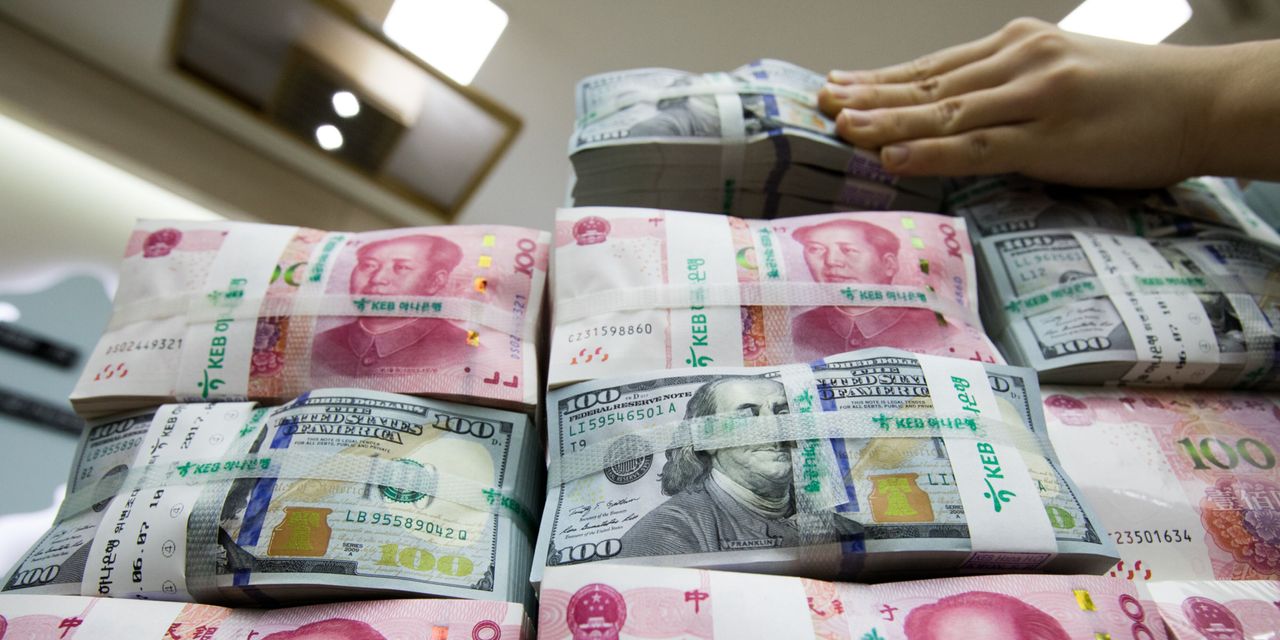When the People’s Bank of China talks, markets listen. Even when it kind of mumbles.
China’s central bank leaked guidance a few weeks ago that it was unleashing state-owned banks to sell dollars to defend the yuan. That stabilized the Chinese currency after a 5% slide over the previous three months.
Beijing’s throat-clearing got investors thinking about Japan following suit. The yen has bounced 4% against the dollar after a 9% slide. This week’s soft inflation report from the U.S. could add to this momentum, hinting at an end to the Federal Reserve’s interest-rate hikes.
So are the reserves-rich Asian giants marshaling a counterattack against the almighty dollar? Not exactly. The
Bank of Japan’s
prime interest rate is 0.1% and China’s 3.55%, compared to the Fed’s 5.25%.
No amount of dollar sales will drive a sustained rally against that basic arithmetic. Intervention can end the one-way bets against the yuan and yen, though, and maintain a measured decline rather than a rout. “Speed always kills with currency moves,” says Edward al-Hussainy, senior currency analyst at Columbia Threadneedle Investments. “They can intervene so that the moves are less disruptive.”
China and Japan both have reasons to welcome a weaker currency. It could support their world-beating export industries, and neither is much worried about importing inflation. Too weak a currency, on the other hand, risks popular discontent as consumer imports become too expensive. “Last year we got a big jump in import prices, and people hated it,” says Masamichi Adachi, chief Japan economist at UBS.
Similarities between the No. 2 and No. 3 economies end there. China is grappling with an underwhelming recovery from last year’s zero-Covid lockdowns. It needs a growth accelerant to whittle down enormous youth unemployment, among other pressing problems.
The classic means to achieve that would be by cutting interest rates, which would further weaken the yuan. “Their key point of tension is between measures to support the economy and increasing pressure on the currency,” says Michael Hirson, head of China research at 22V Research.
Japan is enjoying its best economic mojo in quite some time. Inflation is rearing its head, which is a good thing over there; wages and home prices are both rising for the first time in decades; foreign investors are pouring in. The
iShares MSCI Japan
exchange-traded fund (ticker: EWJ) is up 14% this year despite the slumping yen. The Chinese equivalent,
iShares MSCI China
(MCHI), has lost 5%.
Investors expect the Bank of Japan to support the yen a bit at its next meeting July 28—lifting its cap on 10-year government bond yields, the so-called yield curve control, from 0.5% to perhaps 1% annually. That should suck domestic buyers back in, as the return becomes competitive with hedging costs on dollar investments, Adachi predicts.
The moderate measure could keep the yen above the 150-to-the-dollar level where the government intervened (successfully) last autumn. Current value is around 138.
Actually raising interest rates is less likely, says Ayako Fujita, chief economist at JPMorgan Securities Japan. More than 70% of Japanese mortgages are written with floating rates, and small businesses borrow at less than 1% annually on average. “Policy makers are very much afraid” to risk this equilibrium, she says.
With inflation tentatively entrenching itself around 2% and credit still nearly free, “real rates have never been so negative” in Japan, she says. Throw in expansionist fiscal policy and you get “perfect conditions for asset price inflation,” Fujita concludes.
Investors might want to grab that while they can in Japan. China still has some tensions to work through.
Read the full article here



